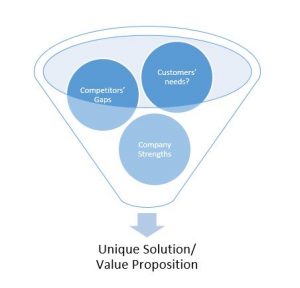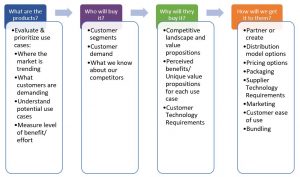I’ve embarked on a new journey with Perficient. After more than four years as part of the management consulting team, I am now responsible for launching our go-to-market (GTM) strategy for our firm’s cloud services. One of my first projects focuses on our partnership with Platform-as-a-Service (PaaS) providers like Pivotal Cloud Foundry and Red Hat OpenShift.
The task at hand is to significantly increase the size of our current business with these PaaS products, which continue to grow in demand. I’ve done GTM work in the past. In 2004, I was working for a telecom company and launched one of the first Voice over IP products specifically designed for calling cards.
I helped Gap Inc. determine whether to go into inner-city markets and how best to go about it. I led one of the most popular baby products’ in a launch internationally and into hospitals. So, this shouldn’t be too different except for one primary difference – the train has left the station on this one.
There is already an exceptional team in place delivering successfully for a number of clients. Marketing has put forth messages and sales has spread the word around something that is resonating with prospects to get them interested enough to buy. And, there is already a process in place for recruiting and training the best talent to ensure our delivery is superior to the many competitors clamoring to get in on this business.
So… this is a little bit different.
First, I’ll step back, though, and explain my view of what GTM is. GTM is simply getting a product or service to a customer who needs it. Done right, it is the confluence of customer demand, gaps in competitive offerings or capabilities and the strengths of a company and its products, and takes into consideration the macro environment (Are there mergers and acquisitions? How is the economic environment? What are the varying industry trends?).
Under normal circumstances, we would start with the customer first and understand customer demand, competitive gaps and know our strengths. Where I’m stepping in, much of the typical go to market analysis has been determined: we’ve noticed a massive demand for cloud services from clients. In fact, this market is estimated to be $16B, and only around 16% of companies have engaged in digitization in a meaningful way, despite the clear, measurable benefits.
With this in mind, we’ve selected a few technology offerings to meet this demand, including cloud partners like AWS, Google, and Microsoft, as well as PaaS solutions like Pivotal and Red Hat OpenShift. Lastly, we know that there are gaps in competitive offerings that we can fill with our unique ability to provide the best in delivery with our talented, experienced, and well-trained developer team. Moreover, our thought leaders are always ready to direct customers with the newest and greatest innovation.
So, I would typically research, ask lots of questions, and then develop a unique solution to meet customers’ needs. The process looks a bit like this:
However, much of this was solved before my new role. This means that I need to catch up and answer questions like the ones outlined here:
Over the next several weeks, I hope to be able to answer many of these questions and develop a plan for our best means of evolving how we go to market in the cloud. More to come…



